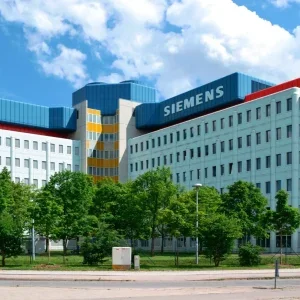Assays from hole AR-15-61c2 represent the best returned from the A3 shear to date, with strong uranium grades in two separate and wide intersections, including 10.5 m at 8.52 U3O8 and an additional interval of 37.0 m at 6.30% U3O8 including 15.0 m at 10.10% U3O8.
This second interval represents a continuous grade x thickness ("GT") of 236 which is the best to date in the A3 shear. Hole AR-15-59c3 also intersected high-grade uranium mineralization at the currently defined southwest extent of the A3 shear including 4.5 m at 13.17% U3O8.
High-grade uranium intercepts in the A3 shear from holes AR-15-61c2 and -59c3 are open and represent top priority drill targets for the 30,000 m winter 2016 drill program (see News Release dated January 7, 2016 for further details on winter 2016 drilling).
AR-15-62 which intersected 30.35 m of off-scale radioactivity (>10,000 to >61,000 cps) in the higher grade A2 sub-zone (see News Release dated October 29, 2015) is the only hole that has assay results pending from the summer 2015 program.
Drill hole locations, and the A2 and A3 long sections are shown in Figures 1 to 3, and assay results are shown in Table 1.
Highlights:
A3 Shear
AR-15-61c2 (245 m down-dip and to the southwest from AR-15-48c1) intersected 10.5 m at 8.52% U3O8 (773.5 to 784.0 m), and a separate interval of 37.0 m at 6.30% U3O8 (804.0 to 841.0 m) including 15.0 m at 10.10% U3O8 (826.0 to 841.0 m).
Hole AR-15-61c2 returns a continuous GT of 236, which is the highest to date within the A3 shear.
AR-15-59c3 (230 m down-dip and to the southwest from AR-15-48c1) intersected 4.5 m at 13.17% U3O8 (668.5 to 673.0 m).
AR-15-61c1 (67 m up-plunge to the northeast of AR-15-52) intersected 14.0 m at 3.57% U3O8 (718.5 to 732.5 m).
AR-15-60c2 (275 m down-dip and to the northeast from AR-15-48c1) intersected 10.0 m at 2.49% U3O8 (842.5 to 853.0 m).
A2 Shear
AR-15-60c2 (165 m down-dip and to the northeast from AR-15-44b) intersected 23.0 m at 1.15% U3O8 (650.0 to 673.0 m).
Arrow, Activities & Financial
The land-based and basement hosted Arrow zone currently covers an area of 645 m by 235 m with a vertical extent of mineralization commencing from 100 m to 920 m, and remains open in all directions and at depth.
The winter 2016 program comprising 30,000 m of drilling has now commenced with six rigs.
The release of a maiden NI 43-101 resource estimate on the Arrow zone is scheduled for the first half of 2016.
The company has cash on hand of approximately $34M.
NexGen Energy vice-president of exploration and development Garrett Ainsworth said: "We are at an exciting time in the development of the Arrow zone, as we continue to discover and prove up significant high-grade mineralization within multiple shear zones. Hole AR-15-61c2 has returned a continuous GT of 236 from 37.0 m at 6.30% U3O8, which is the highest continuous GT in the A3 to date.
"The A3 shear has developed into an important component of Arrow, hosting multiple drill holes with mineralized intercepts greater than 100 GT. Further testing of the A3 shear will continue during the winter 2016 drill program."
NexGen Energy CEO Leigh Curyer said: "Intersecting the best hole to date in the A3 shear in one of the last holes of the summer 2015 program leads NexGen into a very exciting winter 2016 drill season. The team looks forward to continuing to develop these higher grade zones now identified within the A3 shear along with a number of other 2016 drill program objectives within all shears and outside the currently defined extents of the Arrow zone."
Split core samples were taken systematically, and intervals were submitted to SRC Geoanalytical Laboratories (an SCC ISO/IEC 17025: 2005 Accredited Facility) of Saskatoon for analysis. All samples were analyzed using ICP-MS for trace elements on partial and total digestions, ICP-OES for major and minor elements on a total digestion, and fusion solution of boron by ICP-OES. Mineralized samples were analyzed for U3O8 by ICP-OES and gold by fire assay.
All assay batches reported herein are subjected to and have passed rigorous internal QA/QC protocols that include, but are not limited to, the blind insertion of standard reference materials, blank materials and field duplicates into the sample stream at both random and systematic intervals.






